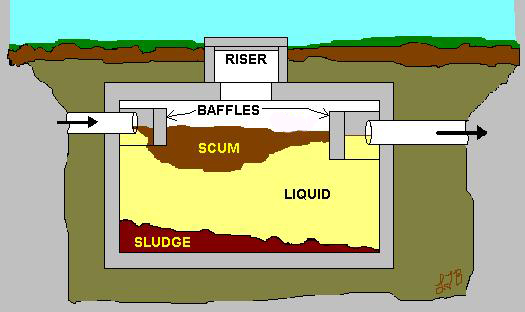What is Leach Field Rejuvenation?
Read More
Schedule Online
919-213-8469

Mar 28, 2023
You probably have a septic tank if you live in a rural location or somewhere without access to a municipal sewage system. An essential part of a septic system, an underground wastewater treatment system that manages and disposes of home sewage, is a septic tank. Solid and liquid wastes are separated and treated in septic tanks, which then discharge the cleaned effluent into the drain field. But what exactly are a septic tank's components, and how do they function as a whole?
In this blog post, our professionals from Septic Blue of Raleigh will explain the components of a septic tank.
The most crucial element of the septic system is the septic tank. It is often buried underground and composed of concrete, fiberglass, or plastic. The tank's size is determined by the size of the household and how much wastewater it produces.
There are two chambers in the septic tank. When wastewater from the house enters the first chamber, the particles sink to the bottom while the liquid rises to the top. The liquid layer, also known as effluent, then pours through a hole near the top of the first chamber and into the second. Any remaining solids fall to the bottom of the second chamber, which serves as a polishing chamber where the effluent is further processed before entering the drain field.
The treated wastewater is discharged into the soil in the drain field, also referred to as the leach field. The drain field consists of a network of chambers or pipes with openings that are covered in gravel beds or trenches. The effluent exits the septic tank and enters the drain field, where it is absorbed by the soil and subjected to additional treatment by the biological processes that occur naturally there.
In order to ensure proper treatment of the effluent, the drain field must be appropriately sized and situated. To avoid contaminating groundwater and surface water, it should be placed far from wells, surface water, and steep slopes.
One of the most crucial parts of the septic tank are the entrance and exit pipelines. The exit pipe transports cleaned effluent from the septic tank to the drain field, while the intake line delivers wastewater from the house into the septic tank.
To stop entering wastewater from disrupting the settled sediments at the bottom of the first chamber, the intake line should have a tee or baffle. To guarantee that only treated effluent is released into the drain field, the outflow pipe should be placed close to the top of the second chamber.
Septic tank pumping involves eliminating the built-up particles and sludge. Depending on the size of the tank and the amount of wastewater produced by the family, it should be done every 3-5 years as part of septic tank maintenance.
A qualified expert with the required tools and training should pump out septic tanks. The solids and sludge that have been taken out of the septic tank need to be appropriately disposed of in accordance with local laws.
Are you in need of a septic tank repair? Luckily, we at Septic Blue of Raleigh have dedicated workers ready at your service. Contact our representatives for more questions.